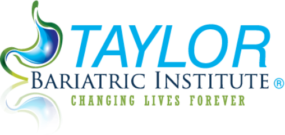After weight loss surgery, you will have to adjust to eating in a new way. Thanks to the reduced capacity of your stomach, you’ll have to be more thoughtful about both the nutritional content and quantity of the food you eat.
Once you have eased out of your transition diet and returned to eating solid foods, monitoring portions will be a significant help to you as you continue working to develop a healthier eating style.
Making Food Count

Because you will become full very quickly, the nutritional content of the food you consume will be very important. If you are not eating the proper combination of essential nutrients, you may develop nutritional deficiencies.
Following surgery, make sure your meals are nutritionally dense. You can do this by making sure your diet is rich in essential nutrients like:
- Protein
- Vitamins
- Minerals
- Mono- and poly-unsaturated fats
- Complex carbohydrates
It may be helpful for you to keep a food journal, or to track your calories on an app like “My Plate” so that you can more easily see what nutrition you are getting daily from the foods you eat. When you know how many calories you’re consuming and the quality of them, you can make adjustments to your diet more easily. Also, if you experience any physical discomfort after eating, you may know exactly which food may have caused it so you can avoid it in the future.
Your weight loss surgeon will likely have given you some precise guidelines for how many calories you should be eating after your surgery. Additionally, you may have specific protein requirements, along with nutritional supplements that you may be asked to add to your diet. Be sure to follow your weight loss surgeon’s recommendations as closely as possible to ensure the best long-term weight loss success.
Managing Portions after Surgery
Getting the best nutrition possible from the foods you eat after weight loss surgery is vital to your long-term health. Making slight changes to the way you eat, as well as to the foods you eat, may help you maintain healthy eating habits.
Here are a few strategies you can use to manage portion sizes following weight loss surgery:
- Use smaller plates and utensils – When you see the portion size that is just right for you on a smaller plate, it will look much more like the “right amount” to your brain. Also, using smaller utensils will help you take smaller bites, which will support your new way of eating.
- Give Yourself 30 – When you eat, take at least 30 minutes to enjoy your meal. Start with your protein portion first. Chew your food slowly to promote ease of digestion.
- Get creative – Whether you present your food in a nice way on your plate or find a new recipe with just the right portion size and nutrition content, you can have a little fun with smaller portions after weight loss surgery.
After weight loss surgery, take time to appreciate the value of food as a source of nourishment and energy that can help you live the healthy life you want to live. Slow down and enjoy each meal after weight loss surgery. You deserve a healthy life and a healthy relationship with food.
Suggested Reading
Quality over Quantity in the Post-Bariatric Surgery Diet
Control Your Portions with 10 Simple Tricks
Stop Overeating by Being Mindful
Also In This Section
- Quality over Quantity in the Post-Bariatric Surgery Diet
- Dining Choices after Weight Loss Surgery
- Fighting Food Cravings after Weight Loss Surgery
- At the Market after Weight Loss Surgery
- Be Happy with Your Healthy Diet after Bariatric Surgery
- Stress-Free Bariatric Dining
- Emotional Eating: Separate Feelings from Food
- Why Olympic Athletes Skip Sports Drinks
- Everybody’s Going Coconuts
- Think Smart at the Farmers Market
- Three Nutritious Whole Grain Alternatives
- Control Your Portions with 10 Simple Tricks
- Limit your Menu to Lose Weight
- Post-Bariatric Surgery Diet
- Avoid These Foods after Bariatric Surgery
- Long-Term Diet Guidelines for After Weight Loss Surgery

